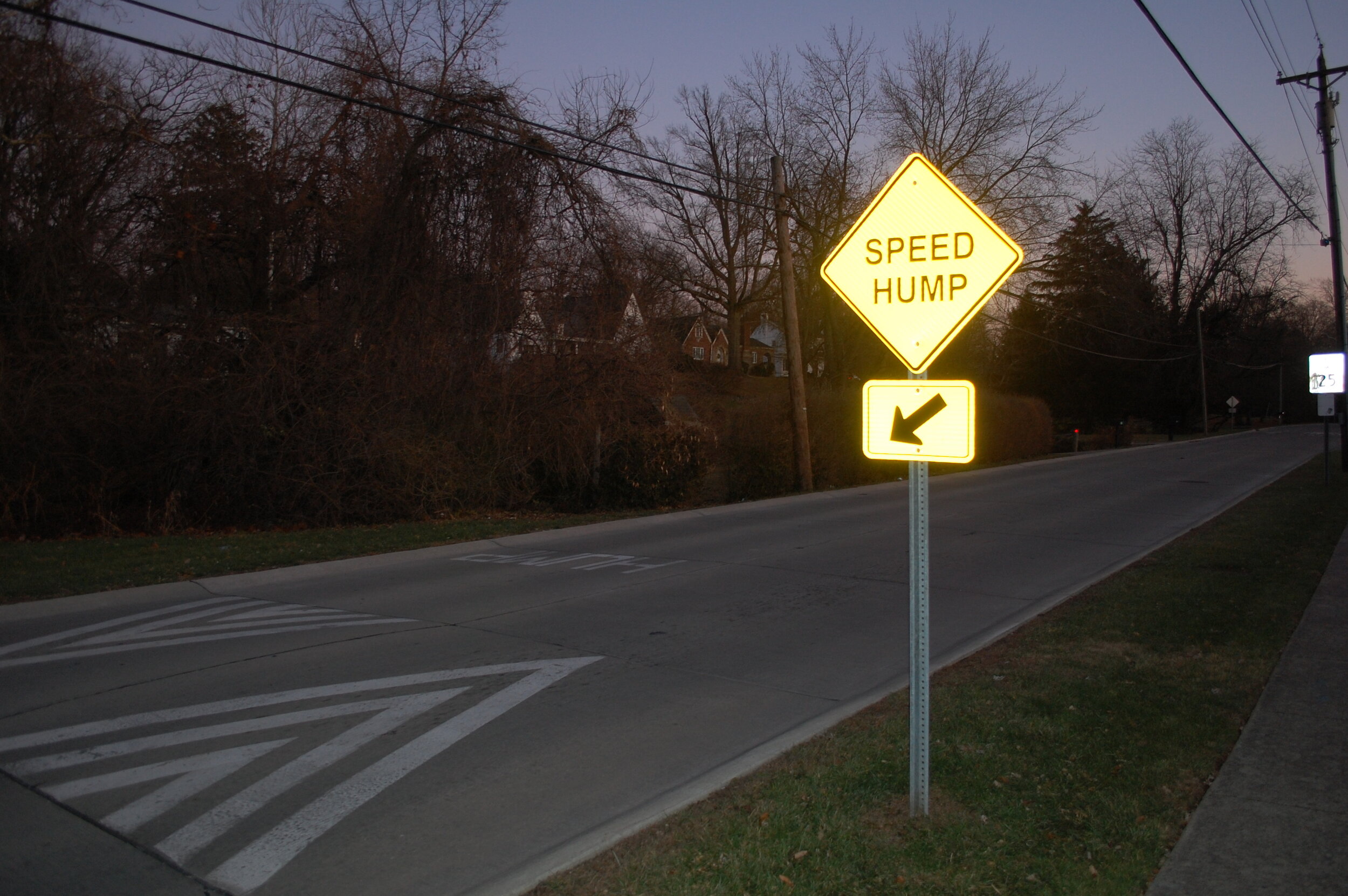We know speeding is the leading cause of traffic accidents in Northern Kentucky and that 44% of all traffic deaths involve speeding. But how can we get cars to slow down? One effective, affordable solution is to install speed humps.
Speed humps have already proved to be a successful safety measure on some Northern Kentucky streets. For example, the speed humps installed in 2016 on Lyndale Drive and Edgewood Drive in Edgewood, Kentucky, reduced average speeds to 16–18 mph, thus reducing the number of injuries during collisions. Before the speed humps, one person was injured in an auto collision every two years on these roads. Since they were installed, no one has been injured—even though the number of collisions has remained the same.
Now you know: speed humps work! Here are three things you probably don’t know about this traffic-calming technique.
Speed humps are not speed bumps
Although they serve a similar purpose, speed humps are not speed bumps. While both are made of paved asphalt, speed bumps are smaller than speed humps and have a more extreme grade, which forces cars to reduce their speeds at a much quicker and more significant rate. Speed humps, however, extend the entire width of the street and reach a maximum of 3 to 4 inches high at a slower grade than speed bumps.
Speed humps are affordable
Of the strategies commonly used to reduce motor vehicle speeds, speed humps are among the most affordable. The average cost of installing a speed hump is around $2,600, according to a 2013 report by the Federal Highway Administration. Portable speed trailers, on the other hand, cost an average of $9,500 to monitor and display current speeds in real time, while raised center-lane medians cost more than $13,000 to construct.
Speed humps don’t restrict emergency responders
The goal of installing a speed hump is to slow passing cars down, but what about emergency vehicles? City planners have considered this question and have developed an effective solution called a speed cushion. Speed cushions are simply speed humps that include flattened spaces to allow large vehicles to pass without slowing down. They’re typically used on key emergency response routes to keep first responders moving fast.


